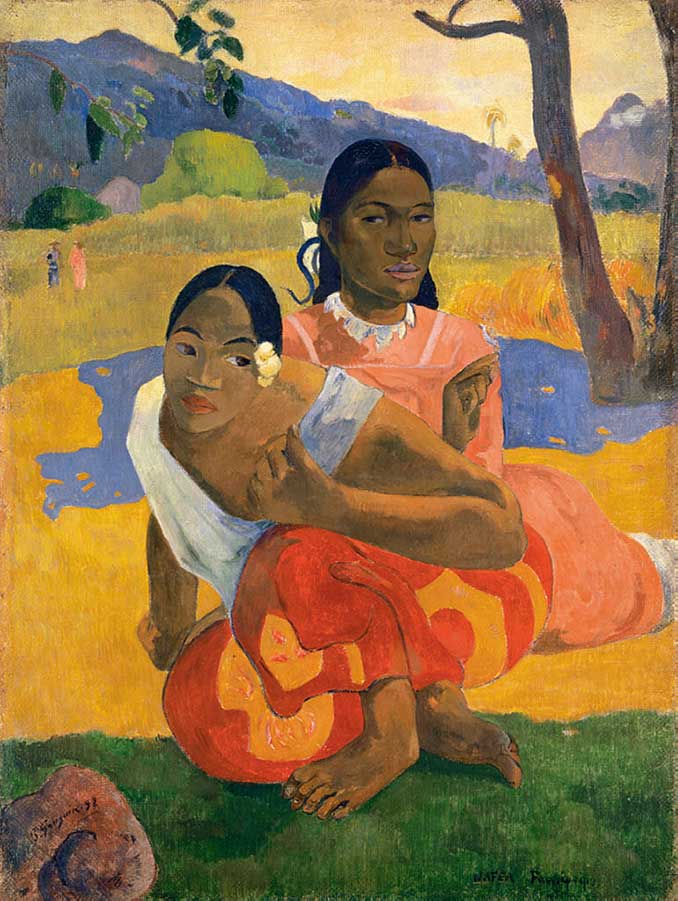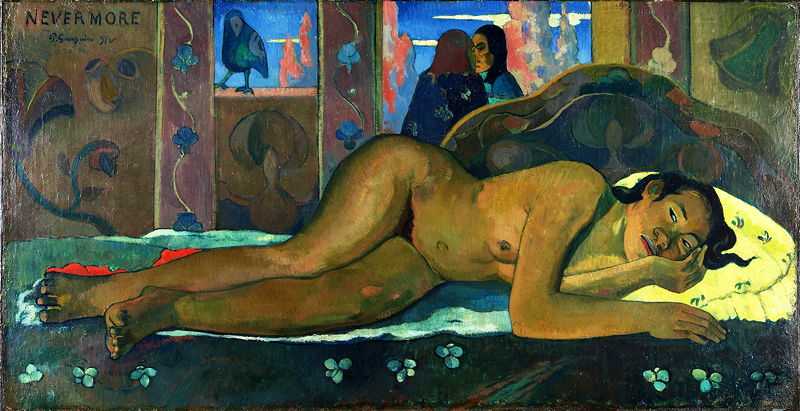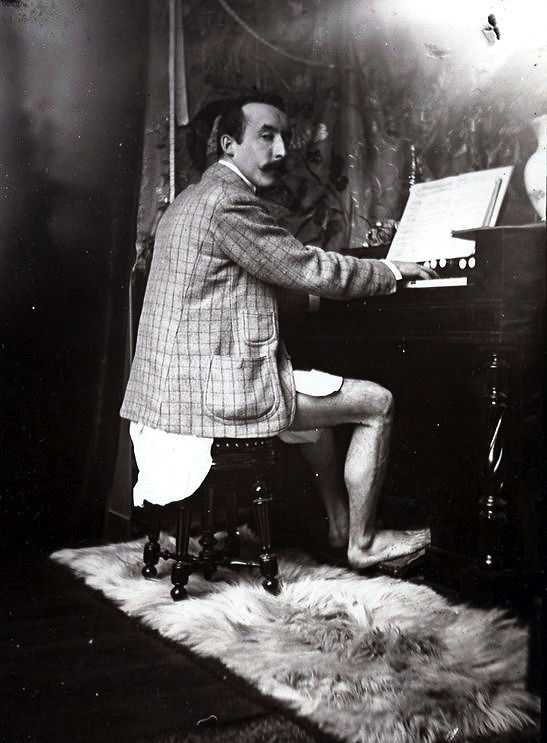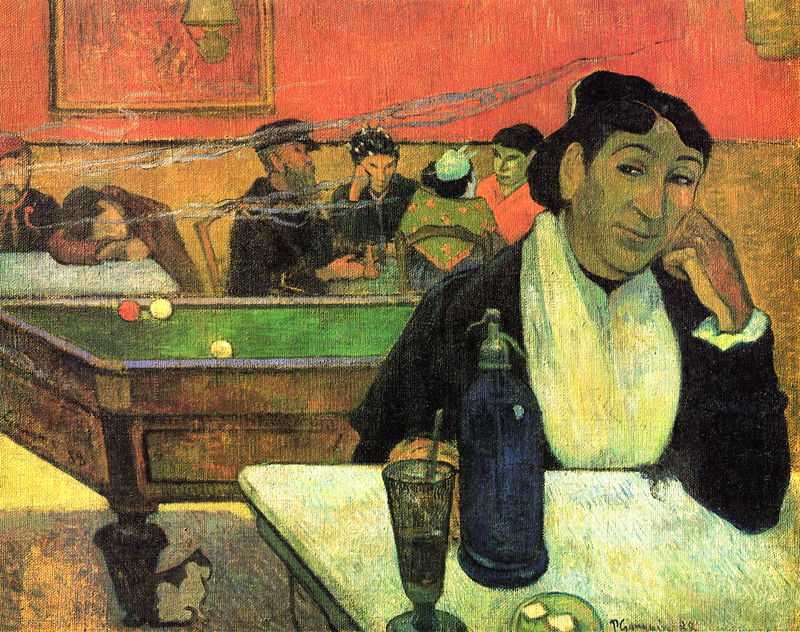1. Gauguin was a bad man
Gauguin was undoubtedly a bad man on a number of levels: he was an ego-maniac, who cared only for himself, and who left a string of failed relationships in his wake. Here's a bit more detail.
(1) Gauguin abandoned his family
Gauguin married his wife Mette in 1873, and went on to have five children with her. He then jacked in his well paid job as a stockbroker, in order to paint full time. Within a few years, he had stopped supporting his family altogether. Indeed, after he set sail for Tahiti for the first time in 1891, he was (despite returning for France for a couple years) never to see any member of his family again.

(2) Gauguin sexually exploited women.
Gauguin was unfaithful to Mette even before they were estranged. So that's not a great start. But when Gauguin arrived in Tahiti he promptly took a 13 year-old bride and gave her syphilis. In typical fashion, he abandoned her when he returned to France briefly in 1893 (and was not to see her again, despite moving back to Tahiti in 1895). Gauguin was later to take on two more teenage brides, and again give them syphilis. And he filled his Tahitian home with pornography and even called it the 'House of Pleasure'. Ick.
Interesting fact...
Gauguin's treatment of women on occasion had consequences for him. He took a mistress on his return to Paris in 1893, a lady known as Anna the Javanese. When Anna had had enough of the relationship, she stripped Gauguin's Parisian flat of everything that could be sold and disappeared.
Oh ... and then there is the fact that Gauguin painted nudes of the miners that he had 'married'. An example of this comes in one of Gauguin's most famous works, Spirit of the Dead.

(3) Gauguin was a bully
This can be seen most clearly by examining the 63 days that Gauguin spent living with Vincent van Gogh in Arles in the south of France at the back end of 1888. Gauguin hectored and belittled van Gogh, who was both mentally fragile and desperate for Gauguin's approval. It is fair to point out that van Gogh behaved pretty oddly at times. But Gauguin's treatment of van Gogh must have been a significant factor contributing to van Gogh slicing off a good portion of his left ear on 23 December 1888.
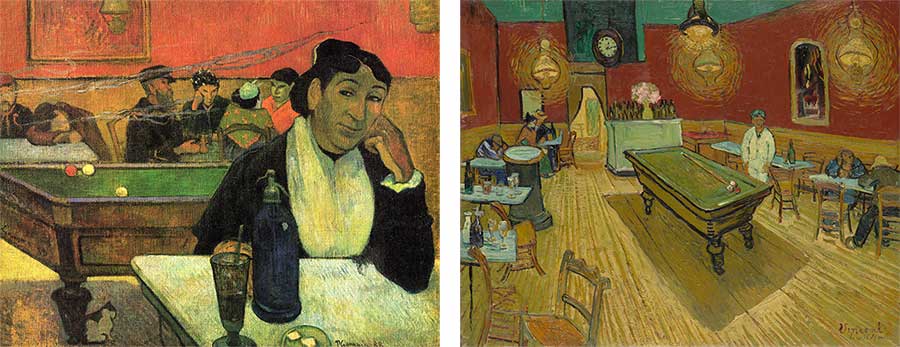
(4) Gauguin was an egomaniac
Gauguin often depicted himself as Christ, for example in Christ in the Garden. Gauguin was trying to portray himself as an artist sacrificing himself to the betterment of visual art. That's a pretty bold move!
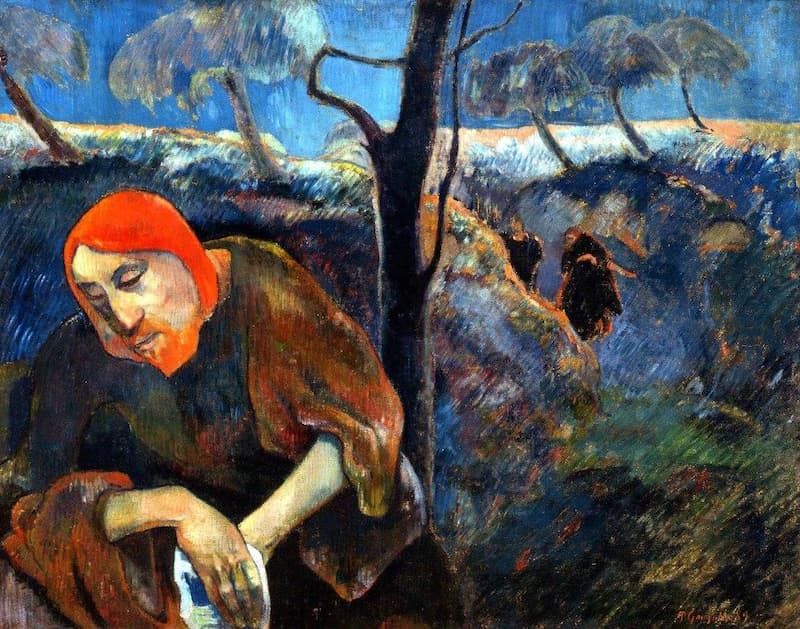
Indeed, he fell out with almost everybody he got close to. Just before she died, Gauguin's mother advised him to concentrate on his career because he had "made himself so unpopular with all my friends". Gauguin even offended the mild-mannered Camille Pissarro so much that Pissarro (once Gauguin's mentor) wrote articles criticising Gauguin's art.
And, when Gauguin went to live like a savage in Tahiti, he became infamous for writing articles in the local papers criticising the church and the authorities - indeed, he died shortly before he was to start a three-month prison sentence for libel.
2. But his art was great ...
Here's the problem: Gauguin's art was remarkable: it is skilful, beautiful and pushes the boundaries.
(1) Gauguin's skill as an artist
Gauguin painted first in impressionist style, then he moved to symbolism, and he finished off painting in what he dubbed a primitivist style. That's pretty skilful. The below pictures show the breadth of Gauguin's talents.
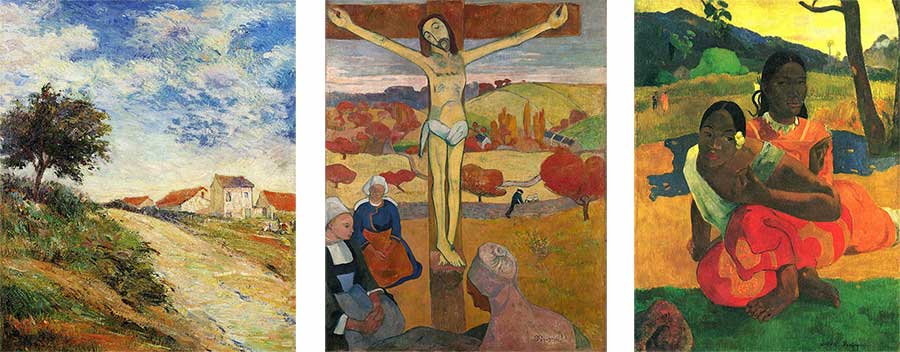
(2) Critical praise for Gaugin's art
Gauguin's pictures are beautiful and have been critically acclaimed. For example, of Gauguin's paintings from Martinique, critic Octave Mirbeau wrote:
"There is an almost religious mystery, a sacred, Eden-like abundance in these forest interiors with their monstrous vegetation and flowers and their tremendous sunsets."
(3) Gauguin's influence on the next generation
Gauguin also influenced a string of early 20th century painters, the most prominent of whom were Henri Matisse, Pablo Picasso and Georges Braque. As John Richardson has written:
"The 1906 exhibition of Gauguin's work left Picasso more than ever in this artist's thrall. Gauguin demonstrates that the most disparate types of art - not to speak of elements from physics, ethnology, symbolism, the Bible, classical myths, and much else besides - could be combined into a synthesis that was of its time yet timeless."
(4) The value of Gauguin's works today
The importance of Gauguin's art can be measured in monetary terms too. In 2014, his When Will You Marry? sold for $210 million, becoming the world's third most expensive artwork.
